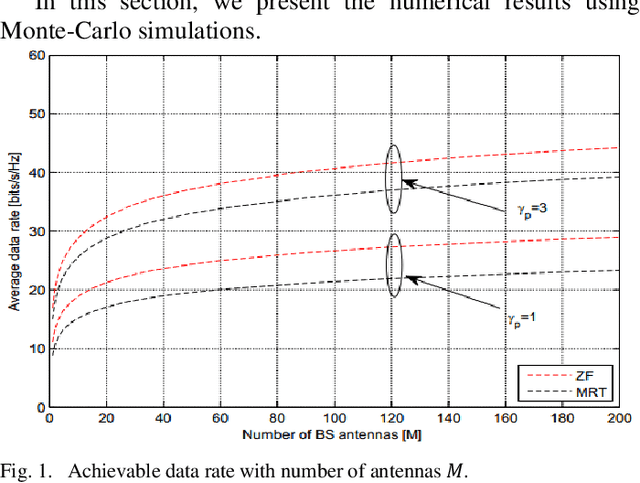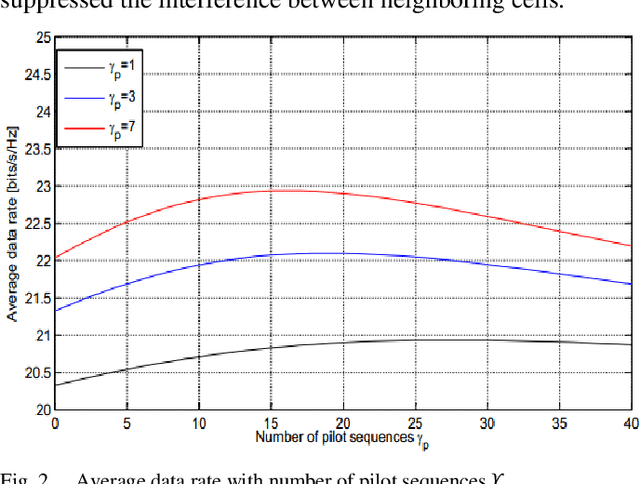Norsaliza Abdullah
Pilot Contamination Elimination for Channel Estimation with Complete Knowledge of Large-Scale Fading in Downlink Massive MIMO Systems
Jun 25, 2021

Abstract:Massive multiple-input multiple-output is a very important technology for future fifth-generation systems. However, massive massive multiple input multiple output systems are still limited because of pilot contamination, impacting the data rate due to the non-orthogonality of pilot sequences transmitted by users in the same cell to the neighboring cells. We propose a channel estimation with complete knowledge of large-scale fading by using an orthogonal pilot reuse sequence to eliminate PC in edge users with poor channel quality based on the estimation of large-scale fading and performance analysis of maximum ratio transmission and zero forcing precoding methods. We derived the lower bounds on the achievable downlink DR and signal-to-interference noise ratio based on assigning PRS to a user grouping that mitigated this problem when the number of antenna elements approaches infinity The simulation results showed that a high DR can be achieved due to better channel estimation and reduced performance loss
Trade-off Energy and Spectral Efficiency in 5G Massive MIMO System
May 22, 2021


Abstract:A massive multiple input multiple-output system is very important to optimize the trade-off energy efficiency and spectral efficiency in fifth-generation cellular networks. The challenges for the next generation depend on increasing the high data traffic in the wireless communication system for both EE and SE. In this paper, the trade off energy efficiency and spectral efficiency based on the first derivative of transmit antennas and transmit power in a downlink massive MIMO system has been investigated. The trade off EE-SE by using a multiobjective optimization problem to decrease transmit power has been analyzed. The EE and SE based on constraint maximum transmit power allocation and a number of antennas by computing the first derivative of transmit power to maximize the trade-off energy efficiency and spectral efficiency has been improved. From the simulation results, the optimum trade-off between EE and SE can be obtained based on the first derivative by selecting the optimal antennas with a low cost of transmit power. Therefore, based on an optimal optimization problem is flexible to make trade-offs between EE-SE for distinct preferences
 Add to Chrome
Add to Chrome Add to Firefox
Add to Firefox Add to Edge
Add to Edge